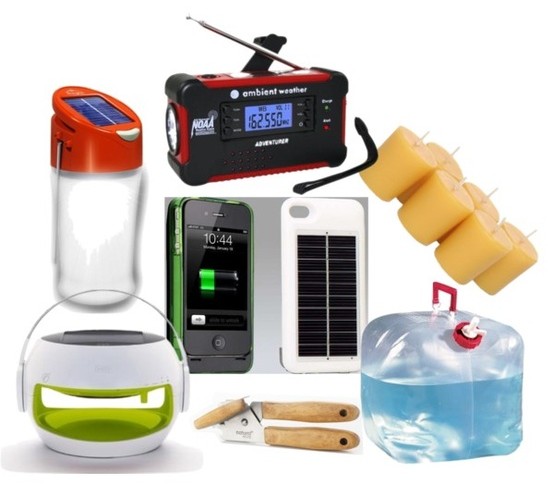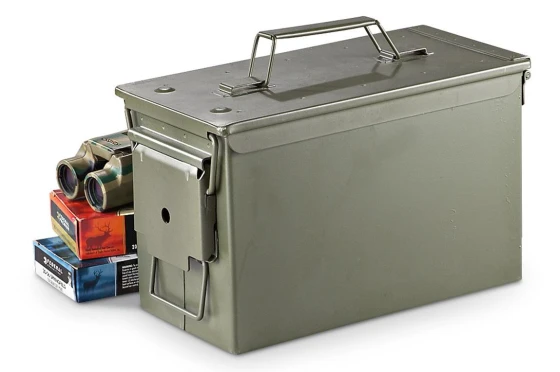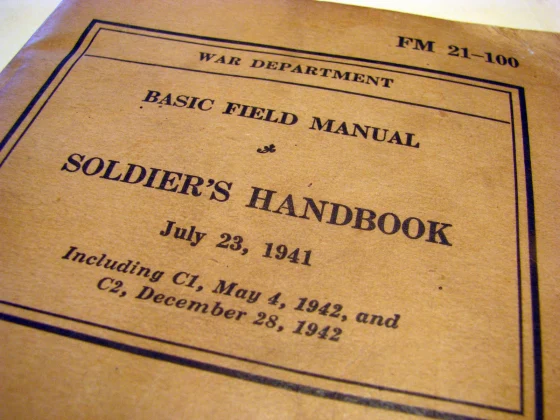Contents:
- 101 Gardening Secrets
- Seeds: Heirloom, Hybrid, & GMO
- Seeds: Collecting, Storage, & Prep
- Global Buckets Self Irrigating, Weed Controlling, Gardening System
- Rain Collection System
101 Gardening Secrets:
These fantastic ideas come from the Squido’s 101 Gardening Secrets Experts Never Tell You:
Seeds:
- Before starting seeds, microwave moistened starting mix, roughly 10 minutes per 2 quarts of moistened soil. Or bake in an oven for 30 minutes at 350 degrees. (Do not use potting soil.)
- Starting plants from seeds? Sprinkle ground cinnamon powder on the soil to prevent fungus that causes damping off.
- Cover seedlings with an upside down clear drinking glass or clear plastic cup. It will hold in moisture and protect the plant from cold air.
- Rooting a plant in water?
- Adding an aspirin will help with water absorption and root growth
- Sowing seeds outdoors? Sprinkle flavored gelatin over them as you sow. Then cover the seeds as usual and water them. The sugar feeds helpful bacteria in the soil and the gelatin provides nitrogen for the plants.
Soil Basic:
- Don’t know what type of soil you have? Try this: Take a handful of moist (not wet) soil from your garden and squeeze it firmly in your hand. Then open your hand and observe what happens. If it holds its shape but crumbles when you give it a light poke, you have loam and will be the envy of other gardeners. If it holds it shape and doesn’t respond to being gently poked, you’ve got clay soil, which is nutrient rich but dense. If it falls apart as soon as you open your hand, you’ve got sandy soil. Once you know what you’re working with you can both improve it if necessary and choose appropriate plants.
- No need to buy a pricey soil testing kit when you can easily do it yourself. Scoop some soil into a container. Add a half cup of vinegar. If the soil bubbles or fizzles, it is alkaline. If there’s no reaction, scoop up some more soil into a second container. Add a half cup of water and stir. Then add a half cup of baking soda. If the soil bubbles or fizzles it’s acidic. If you want a precise pH measure, contact your local university extension office or watch the newspapers. Nurseries will sometimes run promotions with free soil testing.
- Read your weeds if you want to know your soil’s pH. If you’ve got a lot of dandelions, dock, crabgrass, or plantain your soil is acidic. If ironweed, pennygrass and peppergrass are rampant, your soil is alkaline.
Compost:
- Did you know that lint from your clothes dryer can be added to the compost pile or tilled into your garden to help the soil retain moisture?
- Do you use a shredder? Add some shredded paper to your compost pile (just avoid glossy printed material)
- Have a pet that sheds? Or perhaps you’re a haircutter or know someone who will save a bag of swept up haircuttings for you? Hair is even higher in nitrogen than manure. Add it to your garden or compost pile.
- Composting not moving along fast enough? Heat it up by adding some comfrey leaves.
- Live near a beach? Gather some seaweed, rinse the salt off with a hose and add it to your compost pile. (Do this in a paved driveway – do not let the run-off into your garden. The salt is not good for it – just the seaweed.)
- No room to make compost or need some in a hurry? Put a variety of food scraps (vegetable peels, apple cores, etc. No meat or dairy products.) in a food processor or blender and process until a consistent liquid. Add an equal amount of water and pour on plants. Cover with a layer of peat moss.
Mulch:
- Do not add winter mulch until after the first frost. Otherwise you may wind up protecting insects by providing them a warm, safe haven.
- brewer? Used hops are great for mulching.
- loving blueberry plants with evergreen branches.
- Newspaper makes great mulch and suppresses weeds but colored ink and glossy sections leach chemicals into the soil. Wanna be sure you aren’t doing any harm? Many newspapers sell cheap rolls of unprinted paper.
- Do not use bark nuggets for mulch. Your plants will be nitrogen-deficient if you do.
Fertilizing:
- Feed your plants pelletized horse or cattle feed from your local farm supply store. The nitrogen, phosphorous, and potassium in the feed
is just what your plants need. Just lightly sprinkle some on the soil around your plants or put some in the bottom of your planting holes and cover with a thin layer of dirt before adding your plant. - Have access to a pond? Feed your plants nutrient-rich Algae.
- Use a wood stove or fireplace? Keep the ashes in a metal can and use it as needed to feed evergreen shrubs.
- Cut up banana peels and bury them around your rose bushes to add potassium and phosphorus to the soil.
- Gone fishing? After you clean your catch, bury the scraps under and around your veggie plants and rose bushes.
- Crushed eggshells, crab shells and oyster shells sprinkled around tomatoes will add calcium to the soil.
- Another way to add calcium to soil: Use the water from boiled eggs. Let it cool and water calcium hungry plants.
- Use flat club soda to water houseplants. ll appreciate the nutrients in it.
- Boiling veggies for dinner? Don’t pour the nutrient rich water down the drain. Let it cool and use it to water potted plants.
Companion Planting:
- Just about everyone knows that corn, beans and squash are the “three sisters” of the Native Americans and are best planted together. But did you know that morning glories planted with corn and melon will increase their yield?
- Plant basil with tomatoes. The basil will repel some tomato pests.
- Plant tomatoes with asparagus to keep asparagus beetles at bay.
- Do Not plant peas, beans, or peanuts near garlic, leeks, shallots or onions.
- Avoid planting potatoes near squash and tomatoes.
- Plant garlic and onions among your roses to repel pests.
- Marigolds and Monarda protect cucumbers from nematodes and attract pollinating bees.
- Tall, sturdy sunflowers provide good support for beans or cucumber plants.
- Plant radishes with vegetables like broccoli, cabbage and cauliflower to deter cabbage moths.
- Growing hot peppers with squash plants keeps squash bugs away.
Milk:
- For plants such as roses and tomatoes that are prone to fungus and viruses: Add a tablespoon of powdered milk to the soil around each plant early in the season to prevent or at least minimize problems.
- Too late to do that? You can use a spray bottle of spoiled milk diluted with water to spray the infected leaves.
Aphids and Ants:
- Aphids can be picked off by hand or you can get rid of them with a spray of equal parts of antiseptic mouthwash and water.
- Don’t like to pick them off? Wrap a wide strip of tape around your hand, sticky side out, and pat the plants. The aphids will stick to the tape. (Don’t forget the undersides of leaves where aphids like to hide.) Remove tape and discard when finished.
- Want to remove aphids from a distance? Brew a strong tea from citrus peels. Cool and pour it into a spray bottle. Spray infested plants. Won’t harm your plant but will burn the aphids.
- Ants raise aphids so to get rid of aphids, you have to get rid of ants. Dousing ant hills with white vinegar a few times should do the trick.
- Boric acid also kills ants. Dissolve 4 teaspoons of boric acid and a cup of sugar in 3 cups of hot (almost but not quite boiling) water. Let it cool and soak cotton balls in the liquid and use as bait. It will poison the colony.
- Keep ants away from humingbird feeders by coating the wire or chain holding it with petroleum jelly.
Ants will not cross it. - Green lacewings and ladybugs eat aphids, spider mites and similar pests. You can buy them as eggs or larvae at garden centers or by mail. If you get adults you’ll have to wait since it is the larvae that eat the pests.
Slugs and Sails:
- Slugs? They’ll drown themselves in beer (see our next tip) or you can repel them with strongly scented plants like lavender and rosemary.
- Partially bury a few tuna cans or small yogurt or margarine tub types of plastic containers so that the top of the container is level with the soil. Fill with beer near dusk. The slugs will be attracted by the beer and drown in it. Empty in the morning and repeat.
- You can also deter slugs by using sand or gravel around the garden. They can’t move around without a moist surface.
- Coffee (caffeine) will kill slugs and snails. Spread used grounds around base of plant or saturate with leftover coffee.
- Sprinkle crushed eggshells, crab shells and oyster shells around hostas and other plants slugs love. The sharp shards will deter them.
Natural Deterrents For Other Garden Pests:
- Plant a clove of garlic with each tulip bulb to keep squirrels and other rodents from eating them.
- Soak garlic cloves in a large jar of water. Keep the lid screwed on to contain the odor. The longer you soak them the better. Watering your plants with the garlic infused water will repel pests.
- Pour boiling water on weeds growing in the cracks in cement. It will kill the weeds and any seeds that might be hiding there too.
- Invite toads to your garden with a damp shady spot and a clay pot on its side for shelter. They eat loads of bugs but not plants. Give them a source of water to immerse themselves in too since they drink through their skin.
- Gnats and fruit flies a bother? Cut the top off a soda bottle or use a wide-mouthed jar as a trap by filling it with a bit of apple cider vinegar added to water. Place the jar near the infected plant or area where they swarm. The jar will attract and drown them.
- Cutworms destroying your tomato plants? Cut a toilet paper roll in half and press half-way into the soil around each seedling as you plant them. It will serve as a barrier and is biodegradable to boot.
- If your haircutter or dog groomer will save you a bag of swept up hair on occasion, rake some into the top inch or two of your garden beds to keep squirrels and rabbits away
- Rinds from citrus fruit will keep cats away from your garden. They do not like the smell.
- Mice a problem? Do not mulch until after the second frost.
- Wipe mealybugs off plants with a cotton swab dipped in rubbing alcohol.
- Add a bat house and watch your harmful insect population decrease substantially.
- Want to attract ladybugs to your yard? Plant parsley and tansy.
- Plant lavender to repel ticks.
Gardening In Pots:
- Before planting in a terracotta pot, submerge it in water and let it absorb as much as it can or it will soak water away from your plant.
- Line the bottom of a flower-pot with a coffee filter and the soil won’t spill out when you water the plant.
- Age that terracotta flower-pot by “painting” the outside with yogurt, which will attract lichen and mosses.
- Have potted plants that are difficult to keep from drying out in the hot weather? Freeze water in small plastic bottles and turn the bottle upside down in the pots for a steady drip.
- If you are planting a large pot, fill the bottom with recycled foam chips or pieces of styrofoam before adding soil. You’ll need less to fill it and the pot will be lighter and easier to move.
Tools and Gardening Equipment:
- Rusty tools? Soak overnight in apple cider vinegar. Wipe off residue with a cloth.
- If you’re putting your gardening tools away for the winter, coat them with petroleum jelly to prevent rust.
- Spray your lawnmower blades with non-stick cooking spray before mowing and grass won’t stick to the blades.
- Storing sharp tools? Cut a piece of old garden hose the length of the blade and slice along the seam. Place over blade.
- Don’t discard an old garden hose. Cut it into pieces and scatter around your garden under plants. Rodents and some birds will think they are snakes and avoid the area.
More Plant Care Secrets:
- Keep heavy squash and melons from rotting on the ground as they ripen by placing a heavy flat stone under them.
- Cut flowers for arrangements in the morning when they are most full of moisture.
- Prune plants by cutting on an angle. The slanted cut prevents diseases.
- Do not put the same type of plant in the same spot every year. Rotating them is good for the soil and the plants.
- If the bottom leaves of your tomato plants are yellow between the veins, add iron to your soil.
- Want your tulips to stand up straight in your vase? Drop a few copper coins in the vase.
- To keep plants healthy, clean your pruning shears with a solution of one part bleach per ten parts water before moving on to the next plant.
- Learn to “listen” to your plants and they will tell you what they need. For example, if your tomatoes are rotting from the bottom before you can harvest them, the plants need calcium. A few crushed Tums dissolved in water used to water the plants will give the plant a calcium boost.
- Easy way to add iron – Soak a few old rusty nails in a coffee can or jar of water for a day or two. Remove the nails and water your plant with the water they soaked in.
- After bulbs bloom cut and remove the flower stalk but allow the leaves to yellow as they provide nutrients for the bulb for next year’s flowers.
- Plant items closer than suggested. You can reduce the recommended distance by 25% (or more in some cases) for a lusher looking garden and to keep the soil covered, and roots cool while reducing the need for mulch.
- Some plants and herbs can take over your garden. If you can’t resist potentially invasive plants, contain them by planting them first in flower pots and then planting the potted plant or confine their roots by planting them inside the center of a buried length of vertical pvc pipe that is longer than the roots will grow deep.
More Dirty Secrets:
- Kinky hose? Next time leave the water on while you coil it.
- Scrape your fingernails over a bar of soap before gardening – even if you wear gloves. The soap keeps the dirt from lodging under your nails and makes washing your hands a breeze.
- Have acid loving plants like rhododendrons and azaleas? Water them with a cup of vinegar added per gallon of water to lower the pH level of the soil.
- Your potting mix or peat moss won’t absorb water? Add a few drops of dishwashing soap to your watering can.
- Old mini-blinds are great to use for garden markers. Just cut slats to desired length on angle (the pointed end makes it easier to put them in the ground) and write on them with a permanent marking pen.
- Trim your hedges straight by sinking tall stakes into the ground at each end (or at intervals if a very long hedge). Measure the height you want the hedge trimmed to and mark each stake at that point and cut a small notch with a box cutter or similar tool. (The notch is to hold the string in place.) Tie a string between the stakes at the measured height. Make sure it is taut and level. You now have a guideline for pruning.
- Need a fast way to dry herbs? Cover the seat of your car with a sheet of newsprint paper. Lay the herbs in a single layer, close the windows and park the car in a sunny spot. The herbs will dry quickly and your car will smell great. (If you use printed newspaper, and have light colored upholstery, you might want to cover the seat with an old sheet first to prevent ink smudges.
Seeds: Heirloom, Hybrid, & GMO:
back to top
Seeds: Collecting, Storage, & Prep:
back to top
Global Buckets:
 It sounds crazy, but there’s some amazing technology that can be created by combining two cheap 5-gallon buckets along with some other low-cost or free materials. The result is a low-cost foolproof system of growing food.
It sounds crazy, but there’s some amazing technology that can be created by combining two cheap 5-gallon buckets along with some other low-cost or free materials. The result is a low-cost foolproof system of growing food.
Benefits of the 2-bucket system:
- 50% to 80% reduction in water usage.
- 100% reduction in weeds…never pull a weed or use herbicides.
- Once planted, very little attention is required.
- Foolproof: People with very little training (like us!) can reap bountiful harvests.
All you need are a few square meters of space…even rooftops, industrial wastelands, etc.
If security is an issue (you are worried about two-legged as well as four-legged varmints stealing your plants in the night) you can build rolling racks that will allow you to move rows of the planters out in the sunlight during the day, and back in your garage or other secure shelter at night.
back to top
Rain Collection System:
back to top
x





































Me cooking with stuff from the garden on my skillet. Of course at the time I can harvest my own beef and chicken. It’s in the long term plan.
LikeLike